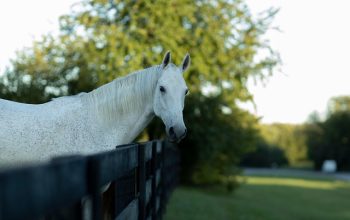Farms are transitioning to sustainable practices, with eco-friendly fencing materials playing a key role. Traditional fences often use non-biodegradable synthetic materials and energy-intensive manufacturing, contributing to environmental degradation. Farmers now have access to alternative fences made from natural fibers like bamboo, hemp, and recycled materials, offering long-term durability, resistance to rot and pests, and alignment with organic farming standards. Installation varies based on material, requiring minimal equipment for plastics and regular trimming for natural options. These eco-friendly solutions control livestock while reducing environmental impact, enhancing biodiversity, insulation, soil health, and water retention, gaining popularity due to their functional and aesthetic benefits as a "fence for farms."
In today’s environmentally conscious world, farmers are increasingly seeking eco-friendly fencing options for their lands. This shift towards sustainability presents an opportunity to enhance farm aesthetics while mitigating ecological impact. This article explores the growing demand for green fencing solutions tailored for farms. We delve into various materials, from natural woods to innovative recycled products, highlighting their benefits and suitability. Additionally, it covers installation, maintenance, and inspiring case studies, providing a comprehensive guide to choosing and implementing an eco-friendly fence for farms.
- Understanding the Need for Eco-Friendly Fencing on Farms
- Materials for Sustainable Farm Fencing: Options and Benefits
- Installation and Maintenance of Green Fencing Solutions
- Case Studies: Successful Eco-Fencing Implementations on Farms
Understanding the Need for Eco-Friendly Fencing on Farms
Farms today face a growing need for sustainable practices, and eco-friendly fencing materials are an essential part of this shift. Traditional fencing options often contribute to environmental issues, from the use of non-biodegradable synthetic materials to energy-intensive manufacturing processes. For farmers looking to minimize their ecological footprint, choosing an alternative fence for farms becomes a strategic decision.
Eco-conscious farmers recognize that sustainable fencing not only reduces environmental impact but also offers long-term benefits. It can help protect crops from livestock and pests naturally, promote biodiversity by providing habitats for local wildlife, and contribute to the overall health of the farm ecosystem. With an increasing demand for locally sourced and organic produce, using eco-friendly materials can also enhance a farm’s market appeal and attract environmentally conscious consumers.
Materials for Sustainable Farm Fencing: Options and Benefits
Farming practices are increasingly adopting sustainability as a core principle, and eco-friendly fencing materials are a significant part of this shift. Traditional fence options often rely on non-biodegradable plastics or wooden posts treated with chemicals, which can harm the environment over time. However, farmers now have access to innovative and sustainable alternatives for farm fencing that offer both long-term durability and environmental benefits.
These eco-friendly materials include natural fibers such as bamboo, hemp, and recycled fibers, which are used to create composite fences. These options are not only renewable but also highly resistant to rot and pests, reducing the need for frequent replacement. Additionally, they have excellent insulating properties, contributing to more energy-efficient farm environments. Other benefits include their ability to blend seamlessly with natural landscapes, enhancing aesthetic appeal, and providing a haven for local wildlife. For organic farms, these materials ensure that no harmful chemicals are introduced into the ecosystem, aligning with certified sustainable farming standards.
Installation and Maintenance of Green Fencing Solutions
The installation process for eco-friendly fencing solutions on farms can vary depending on the chosen material and design. Many green fencing options, such as recycled plastic or organic composite materials, are relatively straightforward to install with minimal equipment. These materials often come in modular sections that can be easily assembled and secured, reducing labour costs and installation time compared to traditional wooden fences.
Regular maintenance is crucial for sustaining the longevity and aesthetic appeal of farm fences. For natural materials like bamboo or living hedges, occasional trimming and pruning are necessary to keep them neat and healthy. Meanwhile, synthetic fencing requires minimal upkeep, merely needing a periodic wash to remove dirt and debris. Regular inspections should also be conducted to check for any damage or loose connections, ensuring the fence remains effective in containing livestock or creating visual boundaries.
Case Studies: Successful Eco-Fencing Implementations on Farms
Successful eco-friendly fencing implementations on farms are becoming increasingly common, showcasing sustainable alternatives to traditional materials. One such example is the use of recycled plastic fences, which have proven effective in controlling livestock while reducing environmental impact. These fences, often brightly colored, provide clear visual boundaries, deterring animals from certain areas without the need for toxic chemicals or frequent maintenance.
Another notable case involves living fences, where native plant species are carefully selected and planted to form a natural barrier. This method not only enhances biodiversity but also offers superior insulation against harsh weather conditions. Farmers have reported significant improvements in soil health and water retention in areas surrounded by living fences, highlighting their potential as both functional and aesthetically pleasing solutions for farm fencing.
Eco-friendly fencing offers a sustainable solution for farmers seeking to minimize their environmental impact. By exploring various materials and installation methods, as outlined in this article, farm owners can contribute to a greener future while enhancing their land’s aesthetics and functionality. Adopting eco-fencing practices not only benefits the planet but also ensures long-lasting, cost-effective barriers for livestock management and land preservation. With numerous successful implementations proven effective, the time to embrace sustainable fencing for farms is now.




